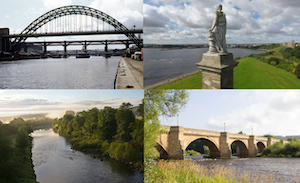Skinnerburn

-
Description
The Skinner Burn is one of a number of streams that ran down to the Tyne, the existence of which is now almost completely forgotten, the stream ran along the west side of the bank in medieval times, its steep banks help protect the city, the burn for many years formed part of the boundary of the City of Newcastle and township of Elswick until the two were united in 1835 and the burn was filled in (or culverted). In the eighteenth century the Skinner Burn along with the banks of the Ouse Burn to the east of the city, became one of the early areas of industrial activity. Along the burn were glass houses, Lime Kilns and a large brewery, a pottery and a foundry. Housing grew up around these concerns, but conditions for residents were unpleasant, the burn being, according to one historian, ‘little better than an evil smelling sewer’. In the nineteenth Century this area became closely linked with the growing railway and heavy engineering industries. In 1818 Robert Hawthorn opened a small engine works on Forth Banks and was joined by his brother William in 1820 to being R & W Hawthorn, the firm that was to become one of the largest engineering concerns in the region, with interests in both railways and marine engineering. Adjacent to the Hawthorn engineering works was that of Robert Stevenson, perhaps the most important engineering works in the world. Little can now be seen of these mighty works and a small outlet in the river walls is now the only indication of the existence of the Skinner Burn. -
Owner
SeeNewcastleUK -
Source
Flickr (Flickr) -
License
What does this mean? Attribution-NonCommercial-ShareAlike License
-
Further information
Link: https://www.flickr.com/photos/128767365@N04/16331213130/
Resource type: Image
Added by: Simon Cotterill
Last modified: 8 years, 5 months ago
Viewed: 1323 times
Picture Taken: Unknown -
Co-Curate tags






